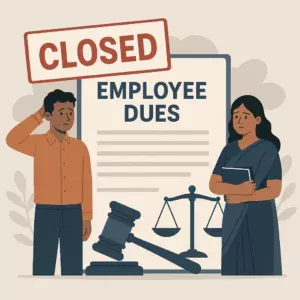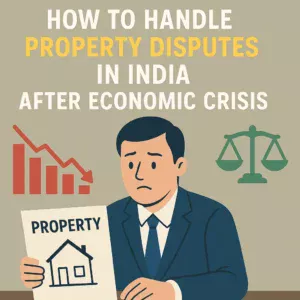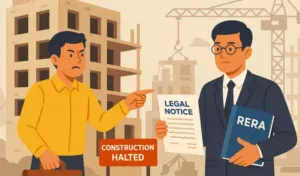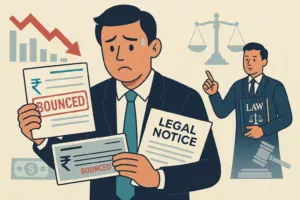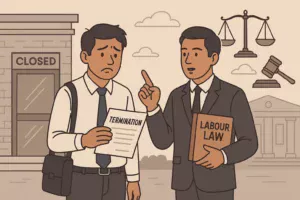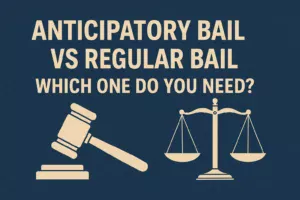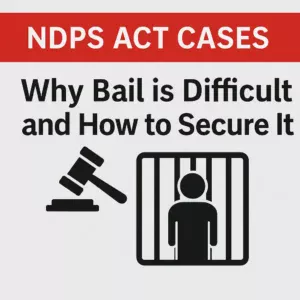This article is a quick Guide for Dealing With Property Boundary Disputes With Neighbors
Introduction to Property Boundary Disputes
Property boundary disputes with neighbors are a common issue faced by many property owners in India. These disputes often arise due to unclear demarcation of property lines, discrepancies in property documents, or encroachments by neighbors. Handling these disputes efficiently and legally is crucial to maintaining peace and securing property rights. This article outlines the essential steps and legal measures you can take under Indian law to resolve property boundary disputes.
Understanding Property Boundaries
Importance of Clear Property Boundaries
Clear property boundaries are essential for defining the extent of your property, ensuring privacy, and preventing legal disputes. They are determined based on the property deed, land surveys, and government land records.
Common Causes of Boundary Disputes
Boundary disputes typically arise from:
- Misinterpretation of property documents
- Encroachments by neighbors
- Discrepancies in land surveys
- Fading or absence of physical boundary markers
Legal Framework in India for Resolving Disputes
Relevant Indian Laws
The resolution of property boundary disputes in India is governed by several laws, including:
- The Indian Easements Act, 1882
- The Limitation Act, 1963
- The Specific Relief Act, 1963
The Role of the Civil Court
In cases where disputes cannot be resolved amicably, parties may approach the civil court for a resolution. The court can order a survey and demarcation of the property, issue injunctions against encroachments, and adjudicate on the rightful ownership and boundaries of the property.
Dealing With Property Boundary Disputes With Neighbors in India
Step 1: Verify Property Documents
- Review your property deed, land records, and any previous survey reports.
- Ensure that your documents are up-to-date and accurately reflect the property boundaries.
Step 2: Attempt Amicable Resolution
- Discuss the dispute with your neighbor to find an amicable solution.
- Consider mediation or arbitration as alternative dispute resolution methods.
Step 3: Engage a Professional Surveyor
- Hire a licensed surveyor to conduct a detailed survey of your property.
- Use the survey results to clarify any discrepancies in property boundaries.
Step 4: Legal Action
- If an amicable resolution is not possible, consider sending a legal notice to your neighbor.
- As a last resort, file a suit in the civil court seeking resolution of the boundary dispute.
Preventive Measures and Best Practices
- Regularly update and verify property documents.
- Install clear and durable boundary markers.
- Maintain open communication with neighbors to prevent disputes.
Final Thoughts
Resolving property boundary disputes in India requires a combination of careful documentation, open communication, and legal intervention when necessary. By understanding the legal framework and following the steps outlined above, property owners can effectively address and resolve boundary disputes with their neighbors.
FAQ on Dealing with Property Boundary Disputes with Neighbors in India
1. What is a property boundary dispute?
A property boundary dispute arises when property owners disagree over the location of their property lines.
2. What causes property boundary disputes?
Disputes often result from unclear demarcation, encroachments, discrepancies in documents, or faded boundary markers.
3. How can I prevent a boundary dispute?
Prevent disputes by maintaining clear, durable boundary markers, updating property documents, and communicating openly with neighbors.
4. What documents are essential for resolving boundary disputes?
Property deeds, land records, and survey reports are crucial for resolving disputes.
5. Can I resolve a boundary dispute without going to court?
Yes, many disputes can be resolved through discussion, mediation, or arbitration.
6. What is the role of a professional surveyor in resolving disputes?
A surveyor can provide an accurate, unbiased determination of property boundaries based on land records and surveys.
7. What legal actions can I take if a dispute cannot be resolved amicably?
You can send a legal notice or file a suit in civil court seeking resolution.
8. Under which Indian laws are boundary disputes resolved?
The Indian Easements Act, 1882, The Limitation Act, 1963, and The Specific Relief Act, 1963, govern these disputes.
9. What is the first step in handling a boundary dispute?
Verify your property documents to confirm the boundaries described are accurate.
10. Can a neighbor build a structure that encroaches on my property?
No, encroachment without permission is illegal and can be contested in court.
11. What is an encroachment?
Encroachment occurs when a neighbor unlawfully extends their property onto yours.
12. How does the court resolve boundary disputes?
Courts can order surveys, issue injunctions against encroachments, and determine rightful boundaries.
13. What is mediation in the context of boundary disputes?
Mediation is a voluntary process where a neutral third party helps disputing parties reach an agreement.
14. How long does it take to resolve a boundary dispute in court?
The duration varies greatly, depending on the complexity of the case and the court’s backlog.
15. Are there any alternatives to legal action?
Yes, mediation and arbitration are effective alternatives to court proceedings.
16. What happens if my neighbor ignores a court order regarding a boundary dispute?
Ignoring a court order can lead to legal penalties, including fines or enforcement actions.
17. Can a boundary dispute affect the sale of my property?
Yes, unresolved disputes can deter potential buyers and affect the sale.
18. How accurate are property deeds in determining boundaries?
Deeds are generally reliable but may require interpretation or updating based on surveys.
19. Is it necessary to update property documents after resolving a dispute?
Yes, updating documents ensures that future discrepancies are minimized.
20. Can the government intervene in boundary disputes between private parties?
Typically, the government does not intervene unless public land is involved or laws are violated.
21. What is an easement, and how does it relate to boundary disputes?
An easement is a legal right to use someone else’s land for a specific purpose, which can sometimes lead to disputes.
22. How can I find a reputable surveyor?
Consult local authorities or professional bodies for licensed surveyors with good reputations.
23. What should I do if my neighbor refuses to cooperate with the surveyor?
You may need to seek legal advice or intervention to enforce your rights.
24. Can landscaping changes lead to boundary disputes?
Yes, if landscaping encroaches on neighboring property, it can trigger disputes.
25. How do I approach my neighbor about a boundary dispute?
Approach them calmly and constructively, providing evidence and suggesting a mutual resolution.
26. What is arbitration in boundary disputes?
Arbitration involves a neutral arbitrator making a binding decision on the dispute, based on evidence and arguments.
27. How can I document evidence of encroachment?
Take photographs, gather documents, and obtain witness statements to support your case.
28. Can I fence my property to prevent disputes?
Yes, fencing within your boundaries can help delineate and protect your property.
29. What is the significance of the Limitation Act, 1963, in boundary disputes?
It sets time limits for filing suits related to property disputes, including boundary issues.
30. How can I ensure a peaceful resolution to a boundary dispute?
Foster good communication, seek mediation, and be willing to compromise to reach a peaceful resolution.



